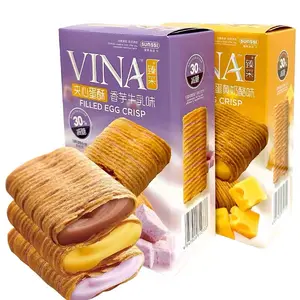Populer di industri Anda






Sisir pelurus rambut tanpa kabel pria, sisir pelurus rambut listrik nirkabel Mini mobil kustom
Rp 311.908 - Rp 335.049
Minimal Pesanan: 1000 Buah
Pengiriman per potong: Rp 62.812







Grosir dan Menyesuaikan Sendiri Merek Keramik LED Pelurus Rambut Cepat Pemanasan Pelurus Rambut Profesional
Rp 82.647 - Rp 115.540
Minimal Pesanan: 500 Buah







Sisir pelurus rambut nirkabel Logo kustom profesional Mini sisir pelurus rambut tanpa kabel isi ulang daya panas Siap Kirim
Siap Kirim
 Siap Kirim
Siap KirimRp 311.908 - Rp 323.478
Minimal Pesanan: 100 Buah







Mesin pengeriting rambut listrik otomatis, dengan tampilan suhu LED untuk penggunaan rumah tangga
Rp 115.705 - Rp 140.499
Minimal Pesanan: 2 Buah






Pengering rambut nirkabel, pengering rambut nirkabel, Ion negatif, pengering rambut listrik, cepat kering, profesional, untuk rumah tangga

Rp 223.146 - Rp 305.792
Minimal Pesanan: 2 Buah







Pelurus rambut tanpa kabel, sikat pelurus rambut pemanasan instan dengan sisir tampilan Led Digital
Rp 272.733 - Rp 355.380
Minimal Pesanan: 10 Buah
Pengiriman per potong: Rp 78.515






Pelurus Rambut Profesional dan Pengeriting 2 In 1 Lapisan Turmalin Suhu Yang Dapat Disesuaikan Pemanasan Instan Layar LCD Digital
Rp 99.176 - Rp 112.400
Minimal Pesanan: 50 Boks






Salon untuk wig jenggot panas tinggi 500 derajat kustom Logo pemanas grosir listrik udara panas pengeriting sisir pelurus rambut

Rp 272.733 - Rp 355.380
Minimal Pesanan: 10 Buah
Pengiriman per potong: Rp 303.974






Sisir pelurus rambut, profesional elektrik Usb Panas 200 derajat tanpa kabel portabel pengering rambut nirkabel ionik sikat pelurus rambut Siap Kirim
Siap Kirim
 Siap Kirim
Siap KirimRp 272.733 - Rp 355.380
Minimal Pesanan: 10 Buah
Pengiriman per potong: Rp 143.309






Sikat rambut elektrik, sisir alat penata Anti melepuh keramik Ion sikat pelurus rambut

Rp 272.733 - Rp 355.380
Minimal Pesanan: 10 Buah
Pengiriman per potong: Rp 78.515






Sisir pelurus rambut elektrik, pelurus rambut elektrik, pelurus rambut cepat panas 360, pengering rambut Ion negatif suhu gigi 4

Rp 272.733 - Rp 355.380
Minimal Pesanan: 10 Buah
Pengiriman per potong: Rp 303.974






Sisir pelurus rambut tanpa kabel, alat penata rambut nirkabel kapasitas besar 2024 Mah dapat diisi ulang 5000Mah Siap Kirim
Siap Kirim
 Siap Kirim
Siap KirimRp 272.733 - Rp 355.380
Minimal Pesanan: 10 Buah
Pengiriman per potong: Rp 143.309
Pencarian Terkait:
bagian plastik pelurus rambutsuhu pelurus rambutbagian pelurus rambutpelurus rambut cinapelurus rambut ipelurus rambut fhipelurus rambut terbaik 2008pelurus rambut 100 hpelurus rambut berkualitas tinggipelurus rambut terbaik 2019pelurus rambut yang lebih murahpola pelurus rambutpelurus rambut 3dpelurus rambut dibuat di cinarambut pelurus rambut besi






Sisir pelurus rambut pria, sisir jenggot profesional standar Ptc tampilan Digital semua dalam satu tombol suhu sikat termal memori

Rp 272.733 - Rp 355.380
Minimal Pesanan: 10 Buah
Pengiriman per potong: Rp 78.515






Sisir pelurus rambut profesional portabel, sikat udara panas pijat pengering rambut Ion negatif pengeriting rambut pabrik Oem

Rp 272.733 - Rp 355.380
Minimal Pesanan: 10 Buah
Pengiriman per potong: Rp 303.974






Sisir pelurus rambut tanpa kabel, sisir portabel Mini tanpa kabel dapat diisi ulang dengan tiga pengaturan suhu Ion negatif Siap Kirim
Siap Kirim
 Siap Kirim
Siap KirimRp 272.733 - Rp 355.380
Minimal Pesanan: 10 Buah
Pengiriman per potong: Rp 143.309






Sisir listrik kustom grosir sisir sikat panas pemanasan cepat sisir sikat pelurus rambut elektrik kualitas tinggi rumah tangga sisir

Rp 272.733 - Rp 355.380
Minimal Pesanan: 10 Buah
Pengiriman per potong: Rp 78.515






2024 diskon besar pelurus rambut besi datar sikat sisir panas pengering rambut udara pengeriting multifungsi alat penata rambut listrik

Rp 272.733 - Rp 355.380
Minimal Pesanan: 10 Buah
Pengiriman per potong: Rp 303.974






Pelurus rambut portabel nirkabel, sisir pengering rambut portabel nirkabel, pelurus rambut Salon ikal isi ulang daya, sisir panas tanpa kabel desain baru pabrikan Siap Kirim
Siap Kirim
 Siap Kirim
Siap KirimRp 272.733 - Rp 355.380
Minimal Pesanan: 10 Buah
Pengiriman per potong: Rp 143.309






Sikat pelurus rambut pemanas Cepat 2 In 1, sikat pelurus rambut suhu dapat diatur Panas 2024

Rp 272.733 - Rp 355.380
Minimal Pesanan: 10 Buah
Pengiriman per potong: Rp 78.515






2024 produk baru sisir pelurus rambut panas profesional sikat udara besi pengering rambut pengeriting alat penata rambut listrik

Rp 272.733 - Rp 355.380
Minimal Pesanan: 10 Buah
Pengiriman per potong: Rp 303.974






Sikat rambut panas nirkabel profesional terbaru sisir pelurus tanpa kabel Enhanced satu langkah sisir pelurus rambut pemanasan cepat Siap Kirim
Siap Kirim
 Siap Kirim
Siap KirimRp 272.733 - Rp 355.380
Minimal Pesanan: 10 Buah
Pengiriman per potong: Rp 143.309






Pelurus rambut sisir panas 3 In 1, besi datar sikat rambut sisir jenggot keramik pemanasan cepat sisir pelurus rambut

Rp 272.733 - Rp 355.380
Minimal Pesanan: 10 Buah
Pengiriman per potong: Rp 78.515






Sisir rambut panas profesional portabel wanita, pengering rambut sikat udara kustom besi pengurai listrik pelurus rambut datar

Rp 272.733 - Rp 355.380
Minimal Pesanan: 10 Buah
Pengiriman per potong: Rp 303.974






Sisir panas rambut tanpa kabel profesional baru 2024 untuk wanita sisir rambut kustom pelurus rambut catok datar elektrik nirkabel portabel Siap Kirim
Siap Kirim
 Siap Kirim
Siap KirimRp 272.733 - Rp 355.380
Minimal Pesanan: 10 Buah
Pengiriman per potong: Rp 143.309






Sisir pelurus rambut 2024New, sikat pengeriting pelurus rambut udara dingin, pelurus besi datar Teknologi

Rp 272.733 - Rp 355.380
Minimal Pesanan: 10 Buah
Pengiriman per potong: Rp 78.515






Salon untuk wig jenggot panas tinggi 500 derajat kustom Logo pemanas grosir listrik udara panas pengeriting sisir pelurus rambut

Rp 272.733 - Rp 355.380
Minimal Pesanan: 10 Buah
Pengiriman per potong: Rp 143.309






Sikat rambut elektrik, sisir alat penata Anti melepuh keramik Ion sikat pelurus rambut

Rp 272.733 - Rp 355.380
Minimal Pesanan: 10 Buah
Pengiriman per potong: Rp 303.974






Papan sirkuit Pcb pelurus rambut prototipe multilapis baru dengan layanan perakitan Pcb
Rp 82.647
Minimal Pesanan: 10 Buah






Papan Sirkuit Pcb Pelurus Rambut Prototipe Cetak Multilapis Baru dengan Layanan Perakitan Pcb
Rp 1.653
Minimal Pesanan: 2 Buah






Sisir pelurus rambut cap Stainless Steel fabrikasi logam lembar Logo kustom pabrik terverifikasi
Rp 3.306 - Rp 16.530
Minimal Pesanan: 1 Buah
Pengiriman per potong: Rp 165.293






Pcba Papan Prototipe Pcb Pelurus Rambut Bagian Elektronik Kustom Layanan Kloning Colone Clonar Rekayasa Terbalik
Rp 4.133 - Rp 7.439
Minimal Pesanan: 10 Buah






Pabrikan pelurus rambut prototipe Volume tinggi Eropa Pcba salinan dasar aluminium keramik papan sirkuit Pcb inti dibalut
Rp 13.224 - Rp 74.382
Minimal Pesanan: 2 Buah






Papan sirkuit Pcb pelurus rambut prototipe multilapis baru dengan layanan perakitan Pcb
Rp 82.647
Minimal Pesanan: 10 Buah






Layanan Kustom Papan Rakitan PCB SMT PCBA Prototipe Papan Sirkuit Elektronik Layanan Desain PCB
Rp 6.612 - Rp 16.530
Minimal Pesanan: 1 Buah
Pengiriman per potong: Rp 784.314






OEM pengisi daya nirkabel pcb papan sirkuit prototipe papan pcb aluminium
Rp 74.382 - Rp 165.293
Minimal Pesanan: 1 Buah






Sisir pelurus rambut profesional, baru kualitas tinggi sisir halus dan halus membuat tidak sakit untuk semua jenis rambut 2024

Rp 272.733 - Rp 355.380
Minimal Pesanan: 10 Buah
Pengiriman per potong: Rp 78.515






Sisir pelurus rambut elektrik, pelurus rambut elektrik, pelurus rambut cepat panas 360, pengering rambut Ion negatif suhu gigi 4

Rp 272.733 - Rp 355.380
Minimal Pesanan: 10 Buah
Pengiriman per potong: Rp 143.309






Sisir pelurus rambut pria, sisir jenggot profesional standar Ptc tampilan Digital semua dalam satu tombol suhu sikat termal memori

Rp 272.733 - Rp 355.380
Minimal Pesanan: 10 Buah
Pengiriman per potong: Rp 303.974






Papan sirkuit Pcb pelurus rambut prototipe multilapis baru dengan layanan perakitan Pcb
Rp 82.647
Minimal Pesanan: 10 Buah






Papan sirkuit Pcb pelurus rambut prototipe multilapis baru dengan layanan perakitan Pcb
Rp 82.647
Minimal Pesanan: 10 Buah
Kategori terbaik
Tentang prototipe pelurus rambut
Beli prototipe pelurus rambut dari Alibaba.com untuk membuat makanan dalam jumlah besar sekaligus dengan cepat dan mengenyangkan. Beli dalam jumlah besar untuk menjaga dapur komersial dan restoran tersedia untuk waktu yang lama. Gunakan prototipe pelurus rambut agar memasak lebih nyaman dan efisien. Tiap paket bisa disajikan panas dan siap memuaskan tamu atau pelanggan.
Kebanyakan prototipe pelurus rambut juga berisi beberapa mi seperti ramen atau bihun. Sayuran kering juga dapat ditambahkan untuk mengimbangi rasa dan nilai gizi makanan. Beberapa varietas harus digoreng dalam wajan, sementara yang lain bisa direbus dalam air. Nikmati rasa seperti ayam atau miso yang dibuat agar enak dan mengenyangkan.
Beli prototipe pelurus rambut dari berbagai pemasok di Alibaba.com dan dapatkan banyak fitur bermanfaat. Beberapa menjual produk mereka dalam jumlah besar sementara yang lain mengenakan biaya berdasarkan unit individu. Merek tertentu dikemas dalam botol yang dapat dituangkan dan dipanaskan tanpa dimasak seluruhnya sebelum disajikan. Banyak juga yang halal atau bebas alergen seperti kedelai atau gluten untuk membantu mengakomodasi orang dengan pantangan makanan tertentu.
Nikmati prototipe pelurus rambut dari Alibaba.com saat membuat beberapa hidangan sekaligus yang perlu murah. Persediaan untuk penggunaan pribadi di rumah atau sediakan restoran untuk memotong biaya. Jelajahi prototipe pelurus rambut dan temukan rasa lezat yang membutuhkan sedikit waktu dan tenaga untuk menyiapkannya.
Kebanyakan prototipe pelurus rambut juga berisi beberapa mi seperti ramen atau bihun. Sayuran kering juga dapat ditambahkan untuk mengimbangi rasa dan nilai gizi makanan. Beberapa varietas harus digoreng dalam wajan, sementara yang lain bisa direbus dalam air. Nikmati rasa seperti ayam atau miso yang dibuat agar enak dan mengenyangkan.
Beli prototipe pelurus rambut dari berbagai pemasok di Alibaba.com dan dapatkan banyak fitur bermanfaat. Beberapa menjual produk mereka dalam jumlah besar sementara yang lain mengenakan biaya berdasarkan unit individu. Merek tertentu dikemas dalam botol yang dapat dituangkan dan dipanaskan tanpa dimasak seluruhnya sebelum disajikan. Banyak juga yang halal atau bebas alergen seperti kedelai atau gluten untuk membantu mengakomodasi orang dengan pantangan makanan tertentu.
Nikmati prototipe pelurus rambut dari Alibaba.com saat membuat beberapa hidangan sekaligus yang perlu murah. Persediaan untuk penggunaan pribadi di rumah atau sediakan restoran untuk memotong biaya. Jelajahi prototipe pelurus rambut dan temukan rasa lezat yang membutuhkan sedikit waktu dan tenaga untuk menyiapkannya.






















